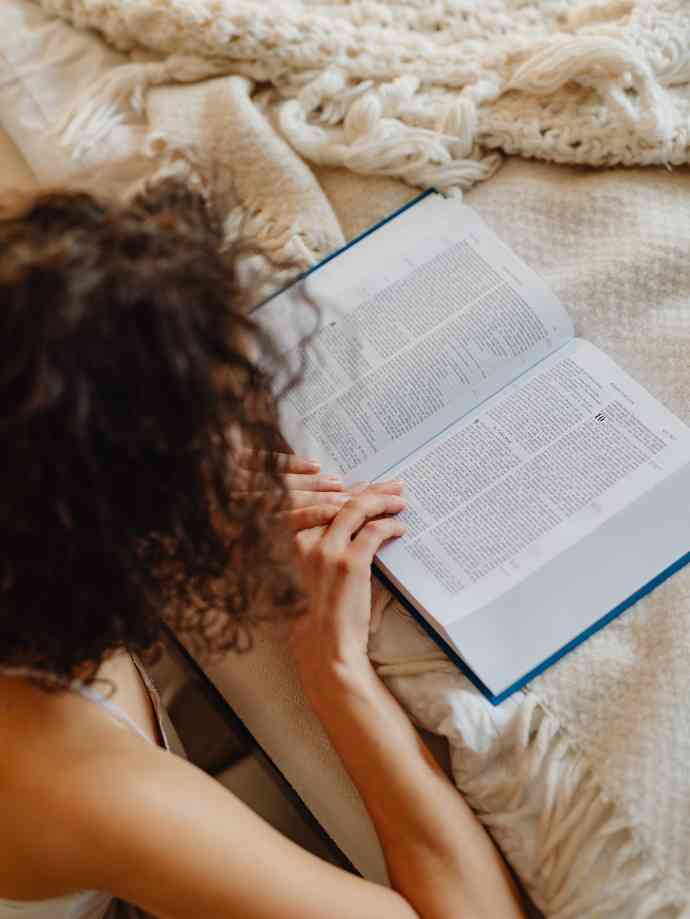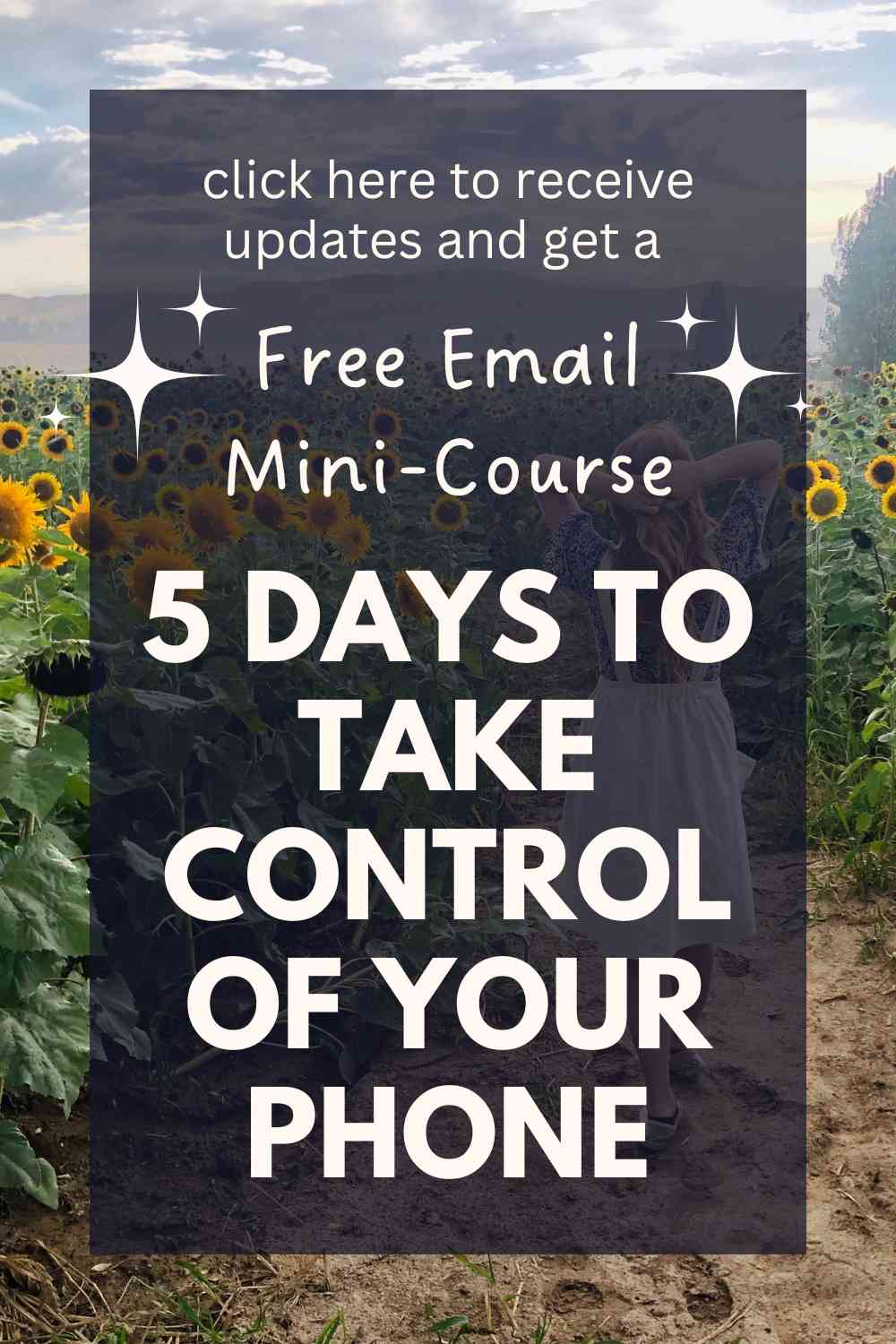Do you wish you read more?
Maybe you’ve never been a big reader, but you want to get into reading.
Or maybe you used to read a ton when you were younger, but gradually you read less and less, and now it’s been months since you’ve finished a book.
In this article, I’ll teach you how to get into reading (or get back into reading) in simple ways that work for you.
My Story
I grew up a big reader – I would go to the library and get stacks of books, read them all in a week, and be back the next Saturday.
Then, in high school and college, I stopped reading for fun – almost completely.
I told myself that I didn’t want to read for leisure because I had to read so much for school, and that was partly true… but it was also because scrolling on social media and watching Netflix had taken over most of my leisure time.
Thankfully, I found my way back to reading. I don’t use social media anymore, and I make it a priority to read more than I watch TV.
Reading is one of my favorite hobbies, and it’s something that I can tangibly feel makes a difference in my mental health and well-being.
Why should you read more? The benefits of reading:
Reading has a ton of benefits. You can read more about them in this article, but here’s a quick rundown of what reading does for you:
- Helps keep your mind sharp
- Encourages empathy
- Calms you down
- Reduces stress
- Increases intelligence
- Strengths vocabulary
- Exercises your creative mind
- Helps you sleep better
- Improves your focus
To me, reading is one of the best self-care practices you can adopt, because it’s been scientifically shown to help you relax AND be creative – critical ingredients for self-care.
Related: My Four Foundations of Self-Care

How to easily turn yourself into a reader:
1. Start with just a little a day.
Don’t have unrealistic expectations of reading 5 books a week.
Start with reading a page before bed for a few days. Then, read two pages before bed. After a week or so, start reading for 15 minutes each night.
Gradually read more and more until it feels natural and easy to do.
2. Prime your environment so it encourages you to read.
Your environment has a huge effect on the decisions you make.
So, make it as easy as possible to decide to read.
Leave books by your couch, in the bathroom, and especially by your nightstand in your bedroom.
My nightstand has completely turned into a cute bookish area. This makes it easy for me to read right before bed and in the mornings – all I have to do is reach for the huge stack of books right next to me.
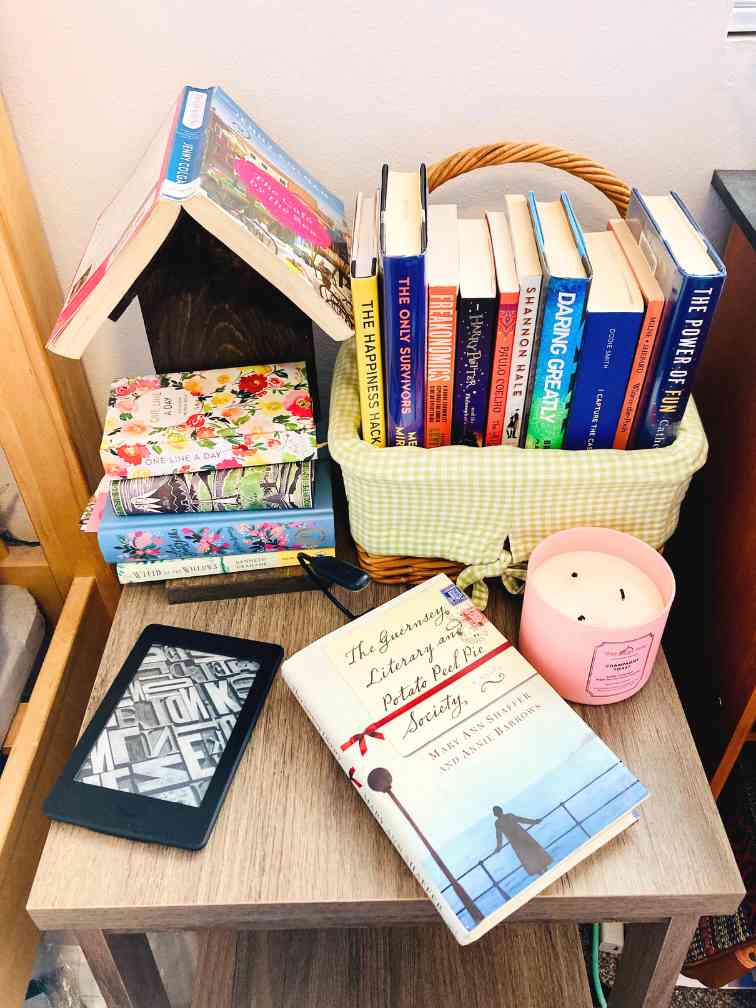
My essentials for my nightstand book sanctuary:
A reading light that hooks to your phone. This is the one I have. It’s super affordable, it’s rechargeable, and the battery lasts forever. I think I’ve only needed to charge it once in the past year.
A book holder that keeps your place when you need to set your book down. I made the birdhouse-inspired one I have, but here is the one I saw on Amazon that I was trying to replicate.
A basket for holding books. I have so many books on my nightstand that I use this lined wicker basket to hold the ones I’m not currently reading, but want to get to soon. I got this one at a thrift store, but here’s a similar one you can find on Amazon.
My Kindle. I’ll talk more about my Kindle in a later point, because I love it so much.
As part of changing your environment, it’s critical to put your phone somewhere else at night that’s not your nightstand. Chances are, if your phone is right there within reach, you’re going to pick that up instead of a book.
3. Read the kind of books you want to read.
Don’t worry about reading distinguished or prestigious books. Read what looks fun to you. This will make reading something that you look forward to doing.
Here are a few recommendations of my favorite fun books of different genres:
Cozy Mystery
The Maid by Nita Prose – a quirky, socially awkward maid finds herself in the middle of a murder mystery at the fancy hotel she works at.
The Thursday Murder Club by Richard Osman – a group of seniors in a retirement home try to solve a murder.
Clean Romance
Austenland by Shannon Hale – a hopeless romantic goes to a Jane Austen-themed estate where she can live like her favorite characters… to get it out of her system, of course. There’s no way she’ll actually find love there, right?
Edenbrooke by Julianne Donaldson – a Regency-era romance set in the British countryside. My favorite “proper romance.”
Thriller
The Girl on the Train by Paula Hawkins – a lonely divorcee becomes involved in a missing person investigation after witnessing the disappearance of a woman she’s secretly been watching.
The Woman in the Window by A.J. Finn – an agoraphobic woman spies on her neighbors and witnesses a murder… or does she?
Historical
The Book Thief by Markus Zusak – a little girl who loves books is sent to a new home in Nazi Germany. She has several poignant brushes with Death, the narrator of the book.
The Guernsey Literary and Potato Peel Pie Society by Mary Ann Shaffer and Annie Barrows – a writer during WWII makes friends with a unique group of people on the German-occupied island of Guernsey… one of my favorites.
Ghosts
Home Before Dark by Riley Sager – a woman who grew up in a famously-haunted house has to go back and confront it… but were the ghosts ever real?
The Graveyard Book by Neil Gaiman – an orphan raised by ghosts in the graveyard – so cute, but spooky vibes too.
Self-Help
Atomic Habits by James Clear – how to form better habits in small, easy ways.
Why We Sleep by Matthew Walker – why sleep is so freaking important… everyone needs to read this!
Daring Greatly by Brene Brown – how the courage to be vulnerable could change your life.
Sci-Fi
The Martian by Andy Weir – the most lovable character is trapped on Mars… you can’t help but root for him so hard.
The Hitchhiker’s Guide to the Galaxy by Douglas Adams – a hilariously strange adventure through the universe.
Interesting Non-fiction
Outliers by Malcolm Gladwell – explores why some of the most successful people became that way… and it’s not the reasons that you would expect.
Freakonomics by Steven Levitt – makes the most interesting connections between social phenomena, like why drug dealers still live with their moms and why school teachers cheat.
Fun Stuff
Calvin and Hobbes by Bill Watterson – a hilarious comic about a boy and his imaginary tiger. Who couldn’t love this?
Harry Potter series by J.K. Rowling – I’m sure you’re familiar with this guy. But if you haven’t read the books before, or if it’s been a while, you’ve got to give it a try. I have this illustrated version and it’s so fun to read.
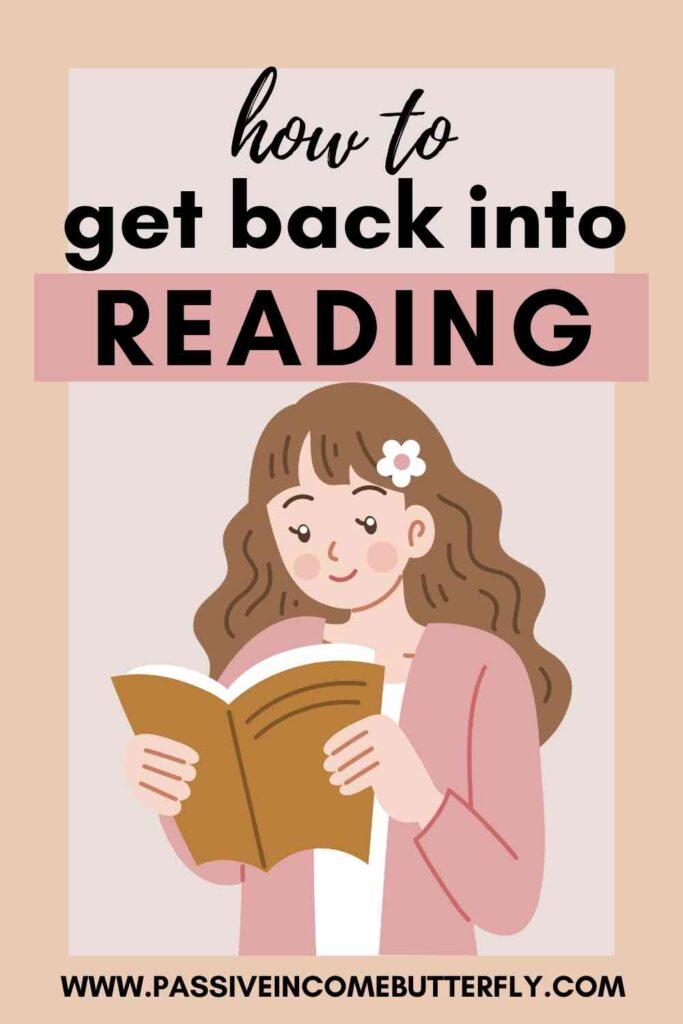
4. Don’t make yourself finish a book if you’re not enjoying it.
Sometimes you start reading something, and it just doesn’t do it for you.
And that’s okay.
Part of the reason people get turned off from reading is because they’ve been forced to read books they didn’t like when they were younger.
I’m all for exploring new genres and picking up novels that are outside your comfort zone.
But if you can’t wait for a book to be over, there’s no rule that says you have to finish it.
Just remember to give books a chance. If you’re on the fence about whether you should keep reading, try the 10% rule. Read 10% of the book, then make a decision. That means if a book is 300 pages, you read the first 30 pages.
If the book comes highly recommended by someone you trust, maybe hold on a little longer.
There are so many books out there, I know you will find some that fit your style. No need to waste time on those that don’t!
5. Explore different genres.
Some people’s minds automatically go to fiction when they think of reading. On the other hand, some people read almost entirely non-fiction.
I recommend regularly reading both fiction and non-fiction.
There are so many unique and interesting books in all genres of both fiction and non-fiction that can be just what you need to read at the moment. Don’t limit yourself by just sticking to one genre!
6. Don’t be afraid to read books for children and teenagers.
Some of my very favorite books are written for younger audiences. They’re usually shorter and easy to read, and the plotlines are often whimsical and cozy.
If a 500-page-thick novel with big words and dark themes sounds daunting to you, or if it sounds like it would take too much energy to decipher, try a book in the children’s, middle grade, or young adult genre.
Here are a few of my favorites:
Mandy by Julie Andrews Edwards (yes, THAT Julie Andrews!)
From the Mixed-Up Files of Mrs. Basil E. Frankweiler by E. L. Konigsburg
Among the Hidden by Margaret Peterson Haddix
Tuck Everlasting by Natalie Babbitt
7. Get a Kindle or use the Kindle app.
If you want to make it easier to read, I highly recommend getting a Kindle. I use mine all the time.
It’s compact and lightweight so I can take it anywhere, it doesn’t strain my eyes if I read it at night, and I can read it in the sun without a glare.
When you buy an ebook, you have access to it instantly – you don’t have to wait for shipping times or until it becomes available at the library!
Even if you don’t have a Kindle, you can download the Kindle app on your phone and read books on the go.
That way, when you’re waiting in line or have just a few minutes, instead of scrolling on Instagram, you can read some of your book.
If you have a Kindle, it will sync with your app, so that you can pick up reading where you left off on either device.
It makes reading so handy!
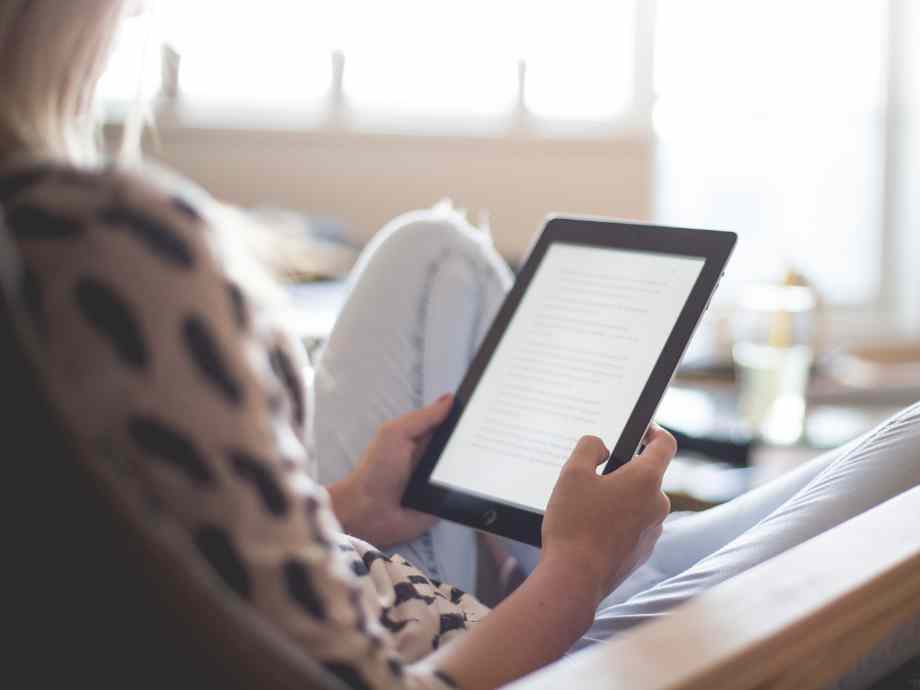
8. Try audiobooks.
Audiobooks are an amazing alternative (or supplement to) traditional books.
If you have dyslexia or aren’t able to spend a lot of time reading physical books, you may want to try listening to audiobooks.
I used to struggle to listen to audiobooks because I’m a very visual learner. My mind would wander and I would have a hard time picturing the scenes occurring in the book.
What I came to realize is that, just like any skill (including the skill of reading), listening to books takes practice.
So if you’ve written off audiobooks, give them another chance! Practice listening to them until your brain gets more used to consuming a story through listening.
You can use Audible to get access to thousands of audiobooks. You can also check out audiobooks for free from your local library (see the next point!).
9. Take advantage of your local library and the Libby app.
If you don’t already have a library card for your local library, head over there NOW and get one! You’ll get access to thousands of books for FREE, plus magazines, DVDs, and other services.
Even if you don’t physically go to the library very often, most libraries have online services you can use with a card.
I check out ebooks through my library’s website, then send them straight to my Kindle. It’s a great thing to do while you’re traveling or just are too busy to go to the library in person.
If your library uses OverDrive (which most of them do), you can download the Libby app and access thousands of ebooks and audiobooks right on your phone.
10. Read the same book as a friend and discuss it.
This can be a great way to stay motivated and accountable in your reading.
If there’s a book club you can join, that’s fantastic! If that sounds too daunting, an easier option is to buddy read with a friend or partner.
Choose a book you’re both excited about reading, then check in every few days to share your thoughts.
Conclusion
So, there you have it – how you can become a reader (again).
Remember to start small, choose books you actually enjoy, and modify your environment so it’s perfect for reading.
Best of luck!


